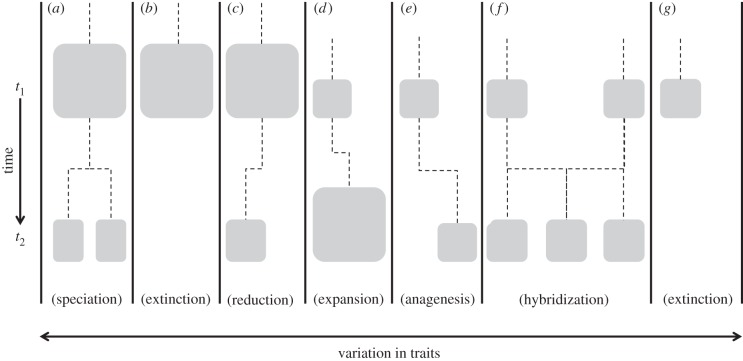Figure 3.
Schematic illustrating trait change through time for a hypothetical set of species. Each species is represented at some time = t1 by a block, the size of the block denotes abundance. Different outcomes occur for each species over time (evaluated at some later time = t2). (a) Speciation results in two distinct species. (b) Abundant species goes extinct. (c) Species abundance significantly reduced, although sub-population with certain traits remains. (d) Species abundance increases, adopting a more varied set of traits. (e) Species adopts a sufficiently new set of traits to become a new species (anagenesis). (f) Two species hybridize, the hybrid eventually becomes a distinct species. (g) Another species extinction. Challenges: though species richness remains constant (eight species), overall phylogenetic diversity and abundance are substantially reduced at t2; if trends are human-mediated, the counterfactual ‘natural’ scenario at t2 is unknown; composition and distribution of extant species changes from t1 to t2; and extinctions might be intrinsically unacceptable.

